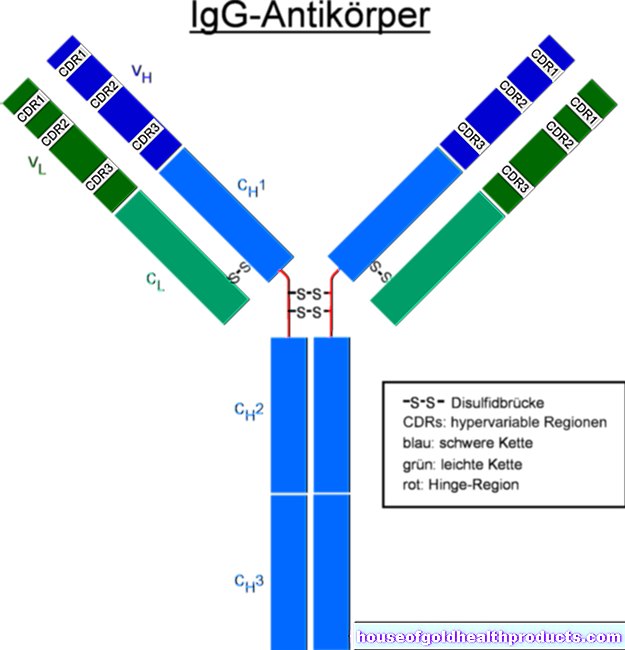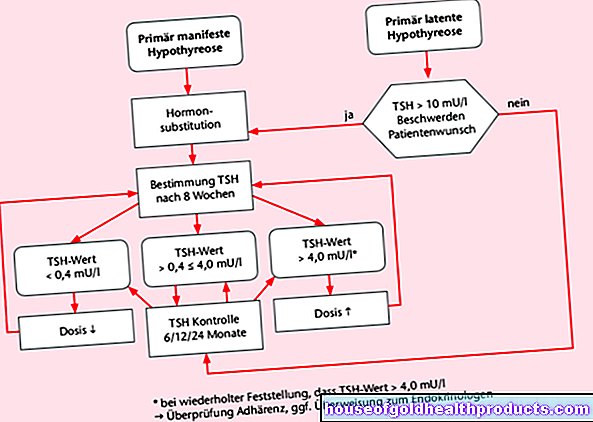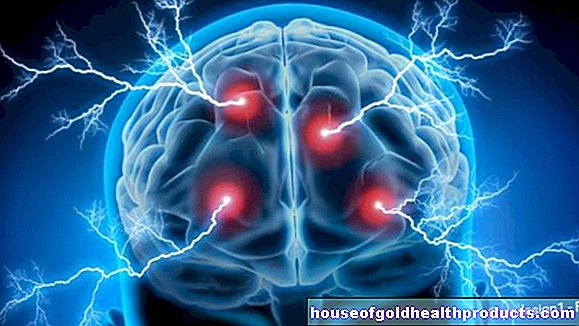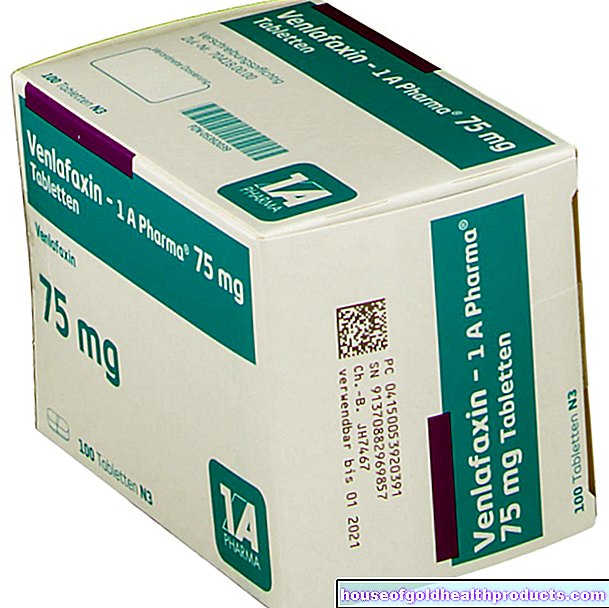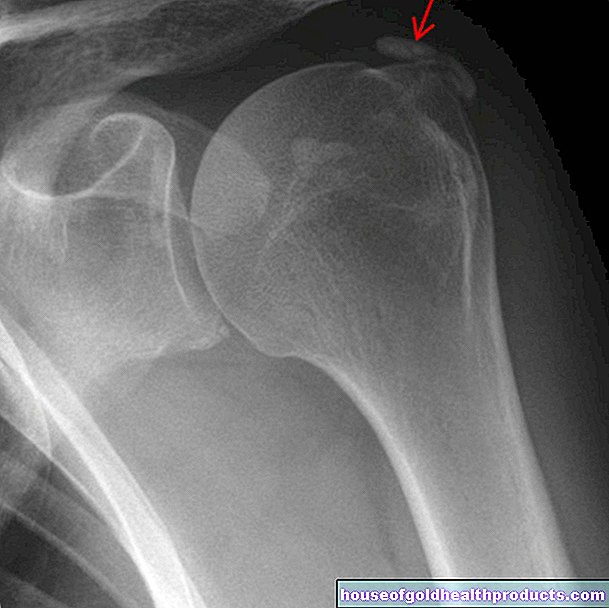Promethazine
Updated onBenjamin Clanner-Engelshofen is a freelance writer in the medical department. He studied biochemistry and pharmacy in Munich and Cambridge / Boston (USA) and noticed early on that he particularly enjoyed the interface between medicine and science. That is why he went on to study human medicine.
More about the experts All content is checked by medical journalists.The active ingredient promethazine is an antipsychotic from the group of phenothiazines. Antipsychotics are mainly used for mental illness. Promethazine is now mainly used for its soothing and anti-allergic properties. Here you can read everything you need to know about the effects and use of promethazine, dosage and possible side effects.
This is how promethazine works
Promethazine has an antiallergic (antihistaminergic), sedative and anti-nausea and vomiting (anti-emetic) effect. Its antipsychotic effect is very weak, if at all. Nevertheless, because of its historical development and its dampening properties, it is assigned to the active ingredient group of antipsychotics (neuroleptics).
Promethazine develops its effects in the central nervous system at different receptors (docking points) of messenger substances, for example at the histamine receptor. Histamine is a messenger substance that, among other things, plays an important role in allergic reactions. As promethazine blocks the histamine receptors, the stimuli transmitted by the histamine are no longer transmitted. This helps against allergic reactions, but also relieves nausea and has a calming, sleep-promoting effect.
The antipsychotic effect of promethazine and other antipsychotics comes about by blocking the dopamine receptors: Dopamine is a neurotransmitter, which in excess can lead to loss of reality, psychosis and schizophrenia. However, antipsychotics can occupy the dopamine receptors so that dopamine itself can no longer dock and thus no longer develop its effects. This means that the loss of reality can be counteracted. Promethazine has only a very weak antipsychotic effect. It has only about 50 percent of the potency of the parent substance chlorpromazine.
The binding to other receptors explains the undesirable side effects of promethazine, such as dry mouth, drop in blood pressure or a prolongation of the QT interval (prolonged QT time in the ECG).
Uptake, breakdown and excretion
After ingesting promethazine, it is almost completely absorbed into the blood through the intestines, but about three quarters of it is immediately broken down into inactive metabolic products in the liver. The breakdown products are mainly excreted via the kidneys with the urine.
When is promethazine used?
The active ingredient promethazine is approved for the treatment of restlessness and excitement in the context of underlying psychiatric illnesses as well as acute allergic reactions, if a calming effect is also desired.
It is also used in:
- Nausea and vomiting (when other measures have not worked)
- Sleep disorders in adults (when other measures have been ineffective)
The duration of use depends on the underlying disease.
This is how promethazine is used
The active ingredient is available in Germany in the form of promethazine drops or tablets. In acute cases, it can also be administered as a solution for injection.
The drops and tablets are usually taken one to three times a day with a glass of water. In the case of insomnia, a single dose at night is sufficient.
Treatment is usually started with a dosage of 25 milligrams of promethazine and increased to 100 milligrams if necessary. In the case of very severe agitation or excitement, the attending physician can briefly increase the promethazine dosage to up to 200 milligrams per day.
What are the side effects of promethazine?
The use of promethazine causes side effects such as dry mouth and drowsiness in more than one in ten patients.
Other possible side effects include changes in the blood count, cardiac arrhythmia, palpitations, blurred vision, increased intraocular pressure, constipation, dry mucous membrane, feeling thirsty, weight gain, sexual dysfunction, inflammation of the liver, congestion of the bile, increased temperature, allergic reactions, itching, rash, increased sweating, balance disorders , Dizziness, seizures, Parkinson's-like symptoms, and urinary retention.
In very rare cases (less than 1 in 10,000 people treated) a so-called neuroleptic malignant syndrome develops during treatment with promethazine in the first few weeks. It is characterized by muscle stiffness, immobility, cramps in the eyes, increased temperature, profuse sweating, rapid heartbeat, impaired consciousness up to a coma and abnormal laboratory findings (increased enzyme values, increased number of white blood cells).
What should be considered when taking promethazine?
Contraindications
Promethazine must not be used in:
- Hypersensitivity to the active ingredient or other ingredients of the preparation in question (tablets, drops, solution for injection)
- severe blood cell or bone marrow damage
- Circulatory shock
- Poisoning with centrally active substances such as alcohol or some drugs
Interactions
Concomitant use of promethazine and certain other drugs (such as the antidepressants duloxetine, tranylcypromine and moclobemide, or the Parkinson’s drug selegiline) inhibits the liver enzymes that break down promethazine. This can increase its effectiveness and any side effects.
Simultaneous use with active substances such as sulpiride (an antipsychotic), cisapride (gastrointestinal agent), ciprofloxacin (antibiotic) or octreotide (agent against certain tumors and the growth disorder acromegaly) leads to increased cardiac arrhythmias.
Certain conduction disorders of the heart (QT time prolongation) occur more intensely during therapy with promethazine. If the active ingredient is combined with other drugs that have the same effect, this can lead to life-threatening cardiac arrhythmias. Examples of such active ingredients are certain antibiotics, anti-malarial drugs, antihistamines (allergy drugs) and antidepressants.
If other sedative drugs or alcohol are taken at the same time, their effect can be intensified. Examples of sedative drugs are some antidepressants, benzodiazepines (sleeping pills and sedatives), barbiturates (anti-epileptic drugs), opiates and opioids (pain relievers and cough suppressants).
Promethazine can affect the way high blood pressure medicines work. It usually increases the antihypertensive effects of these drugs. Then patients can suffer from dizziness, especially when they change position (such as getting up from lying down).
Age restriction
Promethazine is approved for children from two years of age in a correspondingly reduced dose.
pregnancy and breast feeding period
Due to the long availability of promethazine, experience with this drug is very high. Its use has so far not shown any increased risk of malformations during pregnancy. Promethazine can therefore also be used during pregnancy and if you want to have children.
Breastfeeding during treatment is acceptable if promethazine is taken alone and at low doses and the child is closely monitored. If the nursing child develops symptoms such as tiredness, poor drinking or restlessness and no explanation can be found, the attending physician should be contacted.
How to get drugs with promethazine
Medicines with the active ingredient promethazine require a prescription in Germany and can therefore only be obtained from pharmacies with a doctor's prescription.
In Austria and Switzerland, preparations containing the active ingredient promethazine were withdrawn from the market.
How long has promethazine been known?
The active ingredient promethazine has been used clinically as an antihistamine and for calming since the 1940s. Only later was the weak antipsychotic effect discovered.
Based on promethazine, chlorpromazine, the first successful drug from the group of neuroleptics, was finally developed.
Tags: baby toddler organ systems unfulfilled wish to have children